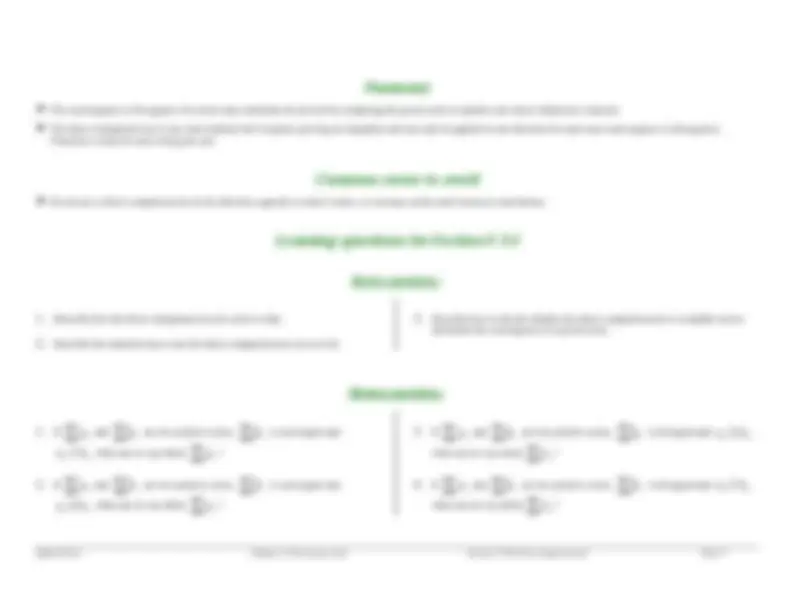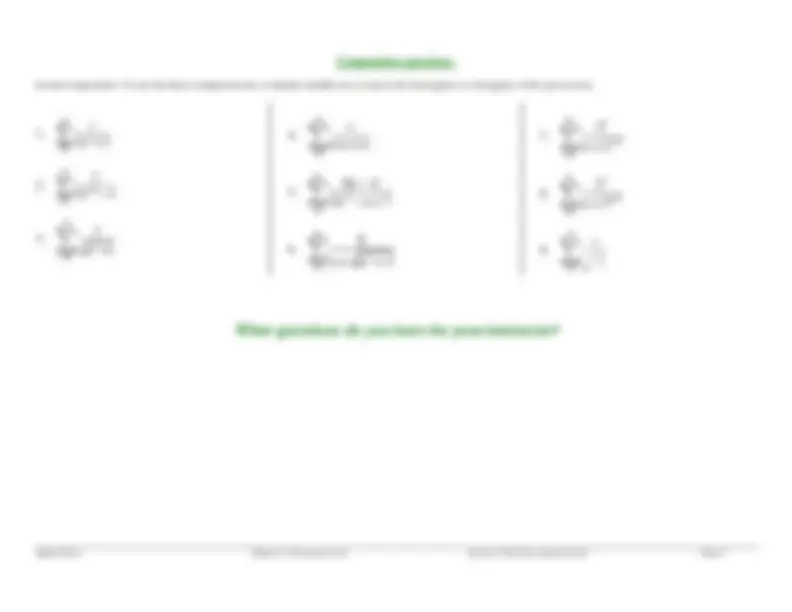




Study with the several resources on Docsity

Earn points by helping other students or get them with a premium plan


Prepare for your exams
Study with the several resources on Docsity

Earn points to download
Earn points by helping other students or get them with a premium plan
Community
Ask the community for help and clear up your study doubts
Discover the best universities in your country according to Docsity users
Free resources
Download our free guides on studying techniques, anxiety management strategies, and thesis advice from Docsity tutors
The direct comparison test, a method used to determine the convergence or divergence of infinite series by comparing them to a known series. It covers the strategy for using the test, examples of its application, and common errors to avoid.
Typology: Schemes and Mind Maps
1 / 4

This page cannot be seen from the preview
Don't miss anything!



The direct comparison test
Although the integral test gives us a powerful way to check the convergence of
a series, it is still dependent on our ability to compute the corresponding integral and,
as you are well aware, this is not always easy or even possible.
But if all we want to do is decide on convergence, without expecting to find or
estimate the sum, we can use a sideways approach: compare the given series to
another one whose behavior is known, such as a geometric series, a p -series or a
telescoping series.
There are two ways of doing this, and in this section we look at the first one.
Strategy for the
direct comparison test
Assume that (^) an and bn are two sequences that
are eventually positive. In that case:
1
n n
(^) is convergent and eventually an bn ,
then
1
n n
(^) is also convergent.
1
n n
(^) is divergent and eventually an bn ,
then
1
n n
(^) is also divergent.
Proof
Since the two sequences are eventually positive, it follows that the sequence
of partial sums of the two series is eventually increasing.
If
1
n n
(^) is convergent, its sequence of partial sums, being increasing, must
be bounded. If eventually an bn , then
1
n n
(^) must also have a bounded
sequence of partial sums, since the first few terms where the condition may
not apply add up to a finite sum. Being eventually monotonic and bounded,
the sequence of partial sums is convergent, hence so is
1
n n
(^) .
If
1
n n
(^) is divergent, being increasing, it must diverge to infinity. If
eventually n n
a b , then the sequence of partial sums of
1
n n
(^) must also
become infinitely large, so that the series diverges.
Notice that both statements are one-way only. This means that we must use
this test with care, but also that in some cases we cannot use it at all.
Example:
2
n
This series seems like a good candidate for the integral test, except for the
small problem that
ln
dx x
cannot be computed with a finite formula.
However, we know that the harmonic series
2
n
n
diverges, and we also
know that, for any positive n :
1 1 ln ln
n n n n
Therefore the series above, being larger than a divergent series, is itself
divergent.
Example: 3
1
n
In this case the integral test can be used, but it is laborious, since the integral
requires the use of partial fractions. Instead, we notice that all terms are
positive and that for any positive n :
3 3 3 3
n n n n n n
But the series 3 3 1 1
n n
n n
is a multiple of a p -series with p 1 ,
hence convergent. Our series, being smaller than a convergent series, is also
convergent. Much easier, eh?
Example: 3
1
n
We may be tempted to use the direct comparison test here too, but we can’t,
at least not in the way we used in the previous example. That is because now
all we know is that, for any positive n ,
3 3 3 3
n n n n n n
Therefore we know that our series is larger than a convergent series. But so
what? It can still be divergent! We need a different method to figure this one
out, or we can use the integral test and go through the partial fractions
procedure.
As you just saw, there are situations where the inequality we want to use in a
direct comparison test goes the wrong way and n some of these cases the integration
cannot be done. Notice also that this test involves proving an inequality, which may
not be easy to do in many situations.
So, you can see why another method of comparing series may come in handy.
In the next section you shall see such method, one that does not require proving an
inequality and in fact uses good old calculus methods.
Computation questions:
In each of questions 1-9, use the direct comparison test, or another suitable test, to assess the convergence or divergence of the given series.
2 1
n
n
1/ 1
n
n
3 1
n
n
1
n
n n
2
1
n
2 1
1
1
n
n
n
1
1
n
n
n
1 1 1
n (^) n^ n